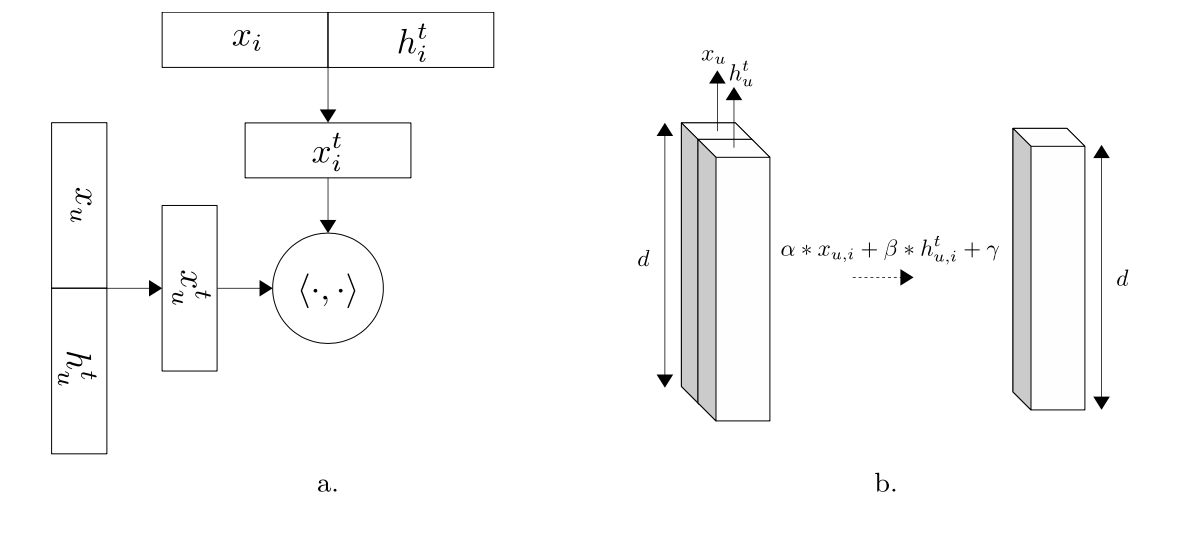方法

-
Let U be the set of all users and I the set of all items. Let us note $x_u \in R^d$ for $u \in U$, $x_i ∈ R^d$ for $i \in I$ the static d-dimensional embeddings of all the users and items we consider. Let $t \in [0 ; ∞]$ be a discrete time-step, taken as days in this work. For a given u, at a given t, we define $h^t_u$ as the items’ history of u, i.e., the set of items found to be of interest to u in the past — we respectively define $h^t_i$ as item i users’ history
-
The score of $a(u,i)$ couple at a given t is given by the scalar product of their dynamic embeddings. In each block, dynamic embeddings are computed using a network of one-dimensional convolution filters of kernel size 1 along the embedding dimension axis, considering user and history embeddings as channels (see Fig. 1.b).
优点
- In many businesses, and particularly in finance, the behavior of a client might drastically change over time. It is consequently crucial for recommender systems used in such environments to be able to adapt to these changes.